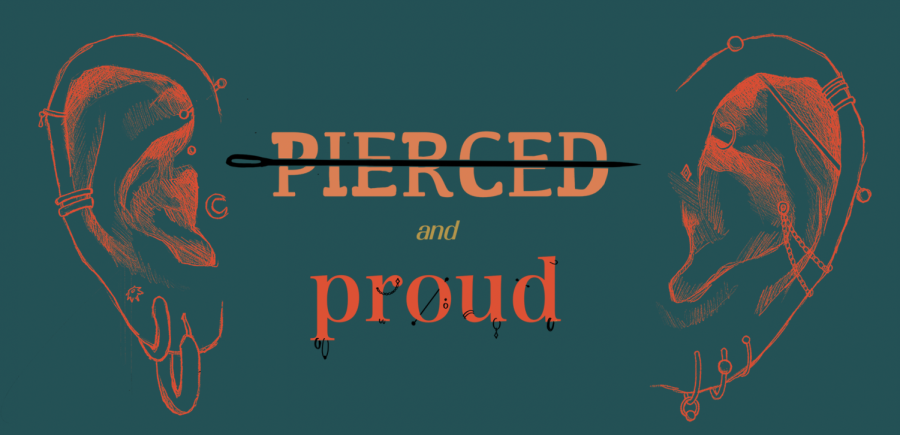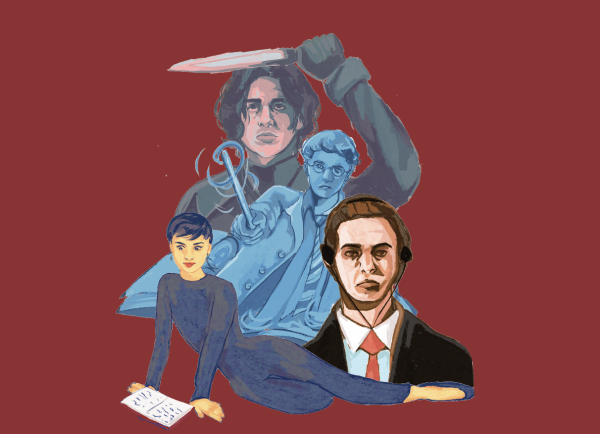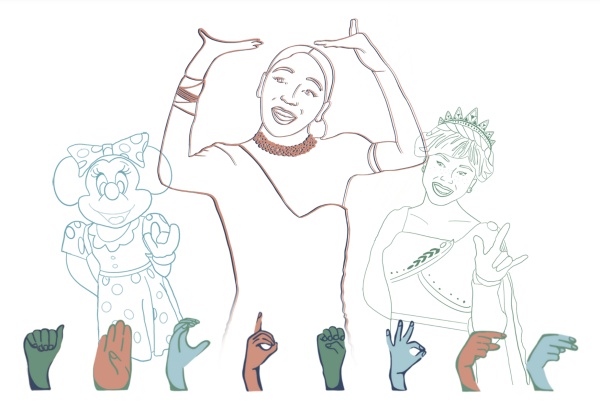Pierced and Proud
How an ancient art medium is used for self-expression among today’s youth.
Piercings have existed for thousands of years. A method of both self-expression and cultural traditions, piercings have maintained popularity and are still prevalent among society today.
Piercings can be noticed on individuals in just about any setting, regardless of its formality. Unique piercings and jewelry are used by some people to express ownership of their bodies and individuality.
Hannah Seeger, a Paly junior, has 19 piercings and has acquired them as a form of self-expression.
“It’s just a fun way to accessorize myself, but in a more permanent way,” Seeger said.
Kim Imfeld, owner of the salon Skin Solution, offers ear piercings alongside a variety of other services such as facials.
“[Piercings] make [teenagers] feel good about themselves and [like] they accomplished something,” Imfeld said.
Piercings originally stemmed from people of color and are now a staple practice among everyone. Rae Sox-Harris, a Paly junior, explains the history of piercings in subcultures.
“Alternative subcultures stem from people of color when they were trying to find a way to make communities and people were really racist, so they correspond piercings with being a bad influence,” Sox-Harris said. “So that’s why piercings are seen as rebellious.”
For some, having piercings is influential in self confidence, serving as a way to see past physical insecurities.
I love my belly button piercing, it’s so cute, and I used to be a little insecure about my stomach, so it’s a distraction. I focus on the shiny jewelry rather than my stomach, and that makes me feel a lot better.
— Rae Sox-Harris, Junior
“I love my belly button piercing,” Sox-Harris said. “It’s so cute, and I used to be a little insecure about my stomach, so it’s a distraction. I focus on the shiny jewelry rather than my stomach, and that makes me feel a lot better.”
The different meanings that come with piercings are often specific to a person and make an individual statement.
“I feel like [having piercings] makes teenagers definitely feel more unique as a person,” Imfeld said. “Whether that is all diamonds in a row or all hoops in a row, it definitely has a meaning to them.”
Unlike clothing items, piercings are typically not subject to fashion trends, and are mostly individual to a person and their likings.
“I don’t think fashion trends really affect [piercings], I just do what piercing I feel like doing or if I see someone else with one I like I’ll just do it,” Seeger said. “It’s more based on what I see, not really trends.”
Sox-Harris agrees, going on to describe how jewelry has historically been a constant in fashion.
Piercings are a really good staple so people don’t phase in and out of interest. It’s not like a clothing item, and it’s easy to change. So it goes with everyone’s style.
— Rae Sox-Harris, Junior
“I would say there are less trends when it comes to piercings,” Sox-Harris said. “Piercings are a really good staple so people don’t phase in and out of interest. It’s not like a clothing item, and it’s easy to change. So it goes with everyone’s style.”
Although facial piercings remain stigmatized, in recent years non-traditional ear piercings have become a more accepted practice.
Piercings have significance in many different cultures. For example, in Hinduism, it is traditional for brides to wear a nose ring connected to a chain that is pinned to their hair to pay respect to Goddess Parvati, the goddess of marriage. For Inuit people, piercings are a rite of passage to adulthood, and in many African cultures, piercing different body parts symbolizes new stages of life.
There are many stigmas surrounding uncommon facial piercings, often stemming from the idea that people participating in the art are rebellious or lack maturity. As a result, the negative aspects of piercings are spotlighted more and the positive characteristics are often ignored.
“I have a lot of piercings,” Sox-Harris said. “I definitely think it’s kind of a rebellion. My mom has a lot of piercings and tattoos and so in a way it is not rebellious, but I would say that in a professional setting and in school it is less common.”
People with different forms of self-expression frequently find themselves being generalized or treated differently. Actions based on unconscious biases toward those with uncommon forms of self-expression are harmful., Changing our behavior as a society to be more accepting of others’ forms of self-expression is essential to create equal opportunities.
“I used to have facial piercings and I was definitely treated differently,” Sox-Harris said. “It was like people saw me and automatically assumed I was a bad influence, and I don’t want to be a bad influence. But it’s definitely unfair.”
Regardless of the stigma, piercings remain a predominant aspect of society today. Whether used as a form of self-expression or for cultural reasons, piercings will never go out of style.
“I decided to try [piercings] once for no reason, and it was fun so I did it again and again and again,” Seeger said.
Print Issue
Please click on the three vertical dots on the top right-hand corner, then select “Two page view.”

2022-2023 Staff Writer
2023-2024 Business Manager
I joined C Mag because I love digital design and writing about arts + culture! My favorite parts...

2022-2023 - Staff Writer
I've always loved flipping through the cool designs and stories in the C mag magazines after they are distributed on campus....







